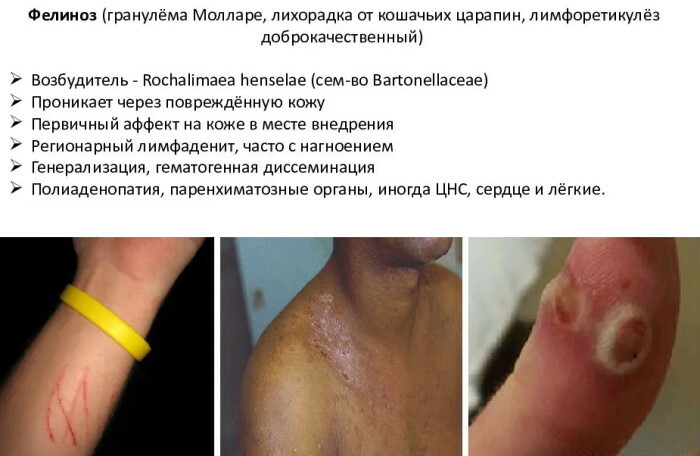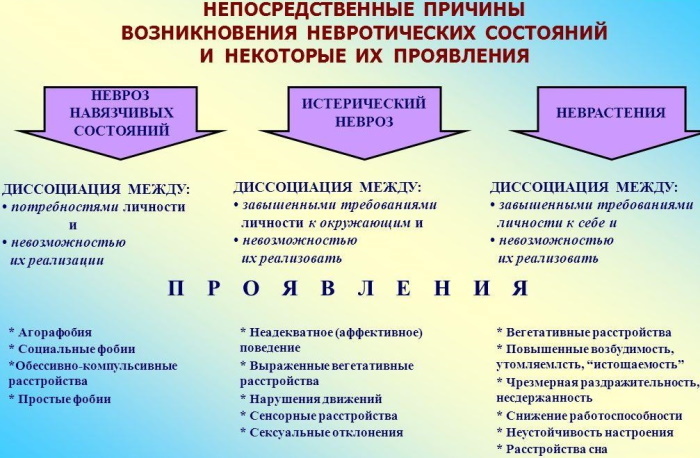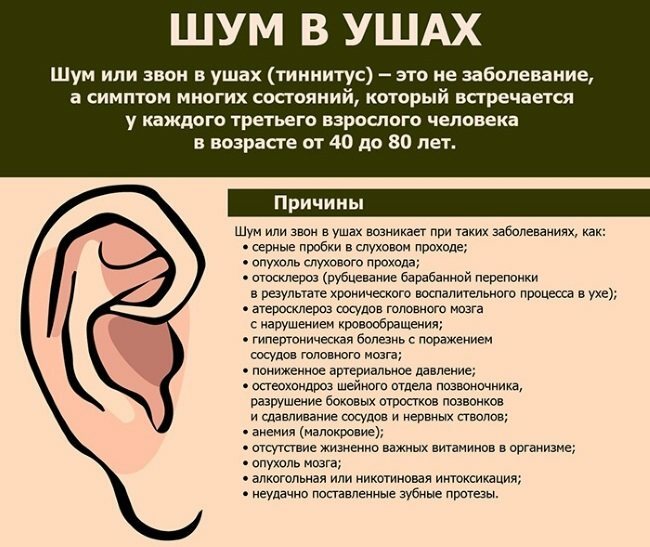Depending on the etiological factor, dermatitis is divided into several types, each of which requires an individual approach to treatment. Risk of dermatitis is that the wrong treatment or no increased risk of extensive inflammation with the addition of bacterial flora. Such a condition may cause damage to the skin deep, purulent - inflammatory processes, which greatly complicates the treatment and for the disease.
Very often the first symptoms of dermatitis in childhood, but over time the disease comes back and bothers in adulthood.

What it is?
Dermatitis - a disease of the skin, caused by internal or external (physical, chemical, biological) agents, often on a background stress and hereditary predisposition. The illness manifested by local and general reactions. Depending on the nature and severity of the pathogenesis, skin disease accompanied by reduction function, disturbance of homeostasis of the organism.
Causes of
The main types / forms considered skin disease can develop at distant and close reasons. The first category refers predisposition reasons:
| acquired | These are the patients who suffered in childhood atopic dermatitis - they develop a predisposition to the emergence of various types and forms considered a skin disease. Moreover, the parents of dermatitis has never been in history. |
| genetic | according to statistics from parents diagnosed with any form of dermatitis, children are born with the same disease in 96% of the cases, if the same data from a skin disease, only one parent is sick, then this probability will be only 58% |
Close the cause of the dermatitis (they are classified as provoked):
- entry into the blood irritants that can cause dermatitis - chemicals, pollen, foods, drugs and more.
- stress. Many believe that stress - it is a simple malaise that quickly goes away after a good rest. In fact, stress state - a complex defensive reaction, which takes place under the influence of hormones.
Even if the blood came stimuli, it does not mean instant dermatitis development - it is necessary to present the favorable factors:
- high temperature;
- severely weakened immune system - for example, against the backdrop of long flowing disease;
- receiving radiation - e.g., from the sun or quartz lamps;
- prolonged exposure to the cold on the skin - such as dermatitis may occur following the abandonment of gloves during a cold winter.
Classification
Depending on the cause of development, the following types of dermatitis.
- Seborrheic dermatitis - chronic pathology of the skin rich in sebaceous glands arising due to activation of conditionally pathogenic lipophilic yeast fungus Malassezia furfur.
- Photodermatitis - skin rashes arising because of increased sensitivity to sunlight (visible light rays and ultraviolet radiation).
- Allergic contact dermatitis - classic delayed-type reaction, which develops due to hypersensitivity to an allergen, and involvement in the process of immune T lymphocytes.
- Simple contact dermatitis - immediate skin reaction that occurs when the direct effects of the irritating agent.
- Toxic and allergic dermatitis (drug reaction) - acute inflammation of the skin that occurs under the influence toxic allergenic agent enters the body through the digestive, respiratory tract or injection.
- Atopic dermatitis - chronic polietiologichesky skin disorders are inherited.
Disease are more prone to people who are in a constant state of stress. At risk are also owners of dry skin, especially in windy and cold weather.

dermatitis symptoms
For each of the above types of dermatitis in adults identified characteristic symptoms (see. Photo). But doctors are isolated and a few common traits that are characteristic of each of the existing types of disease:
- Redness (erythema). Erythema - increased blood circulation in the dermal capillaries. In the acute form of redness with fuzzy edges and swelling. For chronic dermatitis erythema flow is not required. When pressed portion congested skin for a while pales. Erythema should not be confused with the hemorrhage (bleeding under the skin). Hemorrhage is considered as a separate manifestation in skin pathologies - hemorrhagic diathesis;
- Pruritus (prurigo). Its intensity depends on the strength of irritation of skin nerve endings. Inconsistency force prurigo and cutaneous manifestations (severe itching for minor rashes) is a sign of allergy in atopic dermatitis. When contact dermatitis itching at the application site is adequate pathogen damage;
- Exudation. In acute forms of inflammation exudative dermatitis possible with copious discharge. In chronic forms - lichenification (thickening of the skin with a coarse pattern) for the skin cracks and excoriations (samoraschesy);
- skin peeling (desquamation). Pathological increased desquamation caused by dryness (xerosis) the dehydration of skin and insufficient sebum. Desquamation and xerosis have been reported with chronic dermatitis with allergic and inflammatory processes.
- Rash (eczema). The morphology of the eruption and its localization is typical for a specific dermatitis. The most frequent localization of lesions - the moving parts of the body (skin over the joints), the face, scalp, torso, hips, groin.
Additional symptoms are important in the differential diagnosis of specific dermatitis, identified in the survey, examination, laboratory tests and functional tests.
What is dermatitis, photos
The photo below shows how the disease manifests itself in adults.

Atopic dermatitis
The pathogenesis of atopic dermatitis are genetically determined features of the immune response. Most often the disease develops in children with hereditary predisposition in age from 1 year to 5 years.
Provoke the development of pathologic process food products (proteins of animal and vegetable origin) stress and other adverse exogenous factors, UV radiation and aggressive weather exposure.
Atopic dermatitis occurs with periods of exacerbations and remissions and is characterized by the development of inflammatory reactions of skin, increased reactivity to various stimuli, itching and rashes. The disease begins in early childhood, but over time his clinical manifestations subside, and 30-40 years there is a spontaneous healing or regression of symptoms occurs.

Seborrheic dermatitis
The symptoms of seborrheic dermatitis, which can be seen in the photo on the web:
- red plaques having clear boundaries (when dry dermatitis);
- high blood filling dermal capillaries (erythema);
- Moisture in the groin, behind the ears;
- Cracks, serous crusts;
- exudative inflammation;
- itchy dermatitis;
- uneven color flaking, dandruff, alopecia;
- loss of large areas of the skin in severe cases;
- the occurrence of other types of eczema (dermatitis, ear, etc.).
Inflammation of the skin due to the high fat or modified release after exposure to microbial or fungal called seborrheic dermatitis. It is not contagious and therefore can not be transmitted from person to person. Activity opportunistic fungi appears under stress, endocrine or immune disorders, various forms of damage to the nervous system. They concentrate on areas of the skin, populated by sebaceous glands: the face, chest, back, ears, head.

atopic dermatitis
Inflammation is manifested by the reaction of the organism to a specific pathogen. Pathogens may become dust, pollen, animal dander, odors, perfumes or chemicals, medicines, food, liquid, and so on. D. Often associated with seasonal allergy symptoms. Intoxication can occur as a result of production of certain substances in the kidney, liver, thyroid, parasitic infestations, tumors develop.
What are the symptoms:
- skin is covered with large spots of red;
- on the surface to form small bubbles;
- then they burst, forming a moist wound;
- rash strongly itch;
- is accompanied by sneezing, coughing, watering, increased sensitivity to light.
Penetrate into the bloodstream may allergen with food, transmucosal airway, through injections. Located in any part of the skin or mucous membranes.

Contact dermatitis
This is inflammation of the skin caused by contact with certain stimuli. This friction, pressure, exposure to temperature, radiation, burns and other strong stimuli. In this type there is a direct damage of skin, once symptoms occur, it is required to fix this contact irritant possible.
Symptoms of contact dermatitis:
- swelling;
- hemorrhage, mikrogematomy;
- pronounced hyperemia;
- small papules, vesicles;
- Moisture, scales, crusts;
- large bubbles;
- necrotic area.
As food dermatitis is a type of allergic form of the disease. It occurs after contact with substances that cause an inflammatory response. It may be chemical reagents, UV-rays (photocontact or photodermatitis), X-rays, high / low temperature or mechanical factors. Provoke skin reactions may stinging cells, pollen, sap, caterpillar larvae. The main difference between this eczema - it does not have an incubation period.

Diagnostics
Diagnosis of dermatitis is the initial blood test. Except for possible accession to the relevant processes mycotic skin lesions also performed sowing and microscopic examination of the scales with the area that suffered the defeat.
Allergic dermatitis require different variants of allergy tests, mainly used for this cutaneous sample. In cases of frequent allergic nature factor serving as the stimulus is determined by a blood test (increased rate lg E level). Based on the results of the research done appropriate assessment of the patient.
dermatitis treatment
In the case of dermatitis treatment efficacy depends on its shape, and is always selected individually.
To begin treatment of dermatitis in adults is necessary to determine the cause. It is necessary to identify the stimulus (allergen, a toxic substance, a microbial pathogen) and eliminate it. If the stimulus is not defined, as it often happens in allergic and especially neuro-allergic dermatitis, treatment is only symptomatic, i.e. aimed at eliminating symptoms and maintaining step remission.
dermatitis treatment is conservative, consisting of local and general therapy. Acute dermatitis and dermatitis in children are usually treated only with the use of local funds, and chronic forms require a combination of general and local therapy. Local dermatitis therapy is to treat the affected areas of skin. Skin rashes processed inflammatory and antibacterial drugs in the form boltushek, powders, ointments, solutions - depending on the shape and inflammatory cell stage. Dermatitis on the face (seborrheic) is treated with antifungal ointments. Chronic dermatitis treated with corticosteroid anti-inflammatory drugs, acute treated with aniline dyes. Deep ulcerative lesions treated in a hospital.
General treatment of dermatitis comprising administering an immunomodulating, antihistamines, sedatives, depending on the cause of the disease. It is also necessary to eliminate all sources of chronic infection, such as destroyed process carious teeth, chronic sinusitis, tonsillitis and so forth.
Diet for dermatitis
In allergic dermatitis special diet and good nutrition are included in the patient's recovery system. Properly organized and hypoallergenic food products in the patient's diet are the key to uncollected in the body of new doses of allergens. Before the visit to the doctor is necessary to independently determine the minimum list of products that can be consumed without risk of exacerbation of allergic reactions.
Products likely to cause allergies:
- Protein - pork, beef fat, milk, eggs, fish, seafood, eggs, meats, delicatessen, canned meat;
- Vegetable - beans, sauerkraut, pickled vegetables, all berries red, all tropical fruits, mushrooms, dried fruits (apricots, raisins, dates, figs);
- Beverages - sweet soda, yogurt with a filler, cocoa, coffee;
- Desserts - candies, candy, chocolate, honey;
- Seasonings, sauces (ketchup, mayonnaise, soy sauce), canned soups, and any finished products containing colorants, emulsifiers, preservatives and other food additives
Sredneallergennye Products:
- Drink - black tea juice from green apple, herbal teas;
- Protein - lamb, horsemeat, rabbit;
- Vegetable - rye, buckwheat, corn, green vegetables, potatoes;
- Desserts - yoghurts, desserts, curds.
Low-allergenic foods:
- Protein - some types of fish (cod and redfish), lean beef, offal (liver, tongue), low-fat cottage cheese, butter;
- Vegetable - cereals (rice, barley), green salad, cucumbers, squash, turnips, fresh cabbage, spinach, vegetable oil, pears, gooseberry, white currant cherry and white;
- Desserts - Dried fruit of dried pears and apples, prunes.
- Beverages - Fermented milk without the addition of colorants, stewed pears and apples, broths from rhubarb, green tea low concentration, non-carbonated mineral water;
If allergic dermatitis without load is more important the proper organization of power. The basic principle - the inclusion in the diet of easily digestible low-calorie foods. No universal recommendations. You can learn more about you personally recommended products can be your doctor and dietitian.

Answers on questions
1) Do dermatitis Contagious?
- No, this dermatitis is not contagious, but in order to avoid joining a secondary infection necessarily skin scrapings are taken for mycological research.
2) whether the contact dermatitis is inherited Passed?
- Of all the dermatitis caused by external factors, can only be inherited by allergic dermatitis.
3) Is it possible to reuse irritating factor (chain, belt buckle, rings) that cause dermatitis, after the normalization of the skin?
- Contact dermatitis is repeated almost every time in contact with an irritant.
4) Can a contact dermatitis to develop into a systemic allergic disease such as bronchial asthma?
- No, it can not, in asthma develops only atopic dermatitis.



